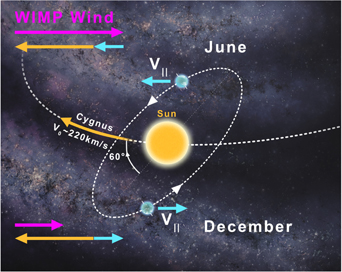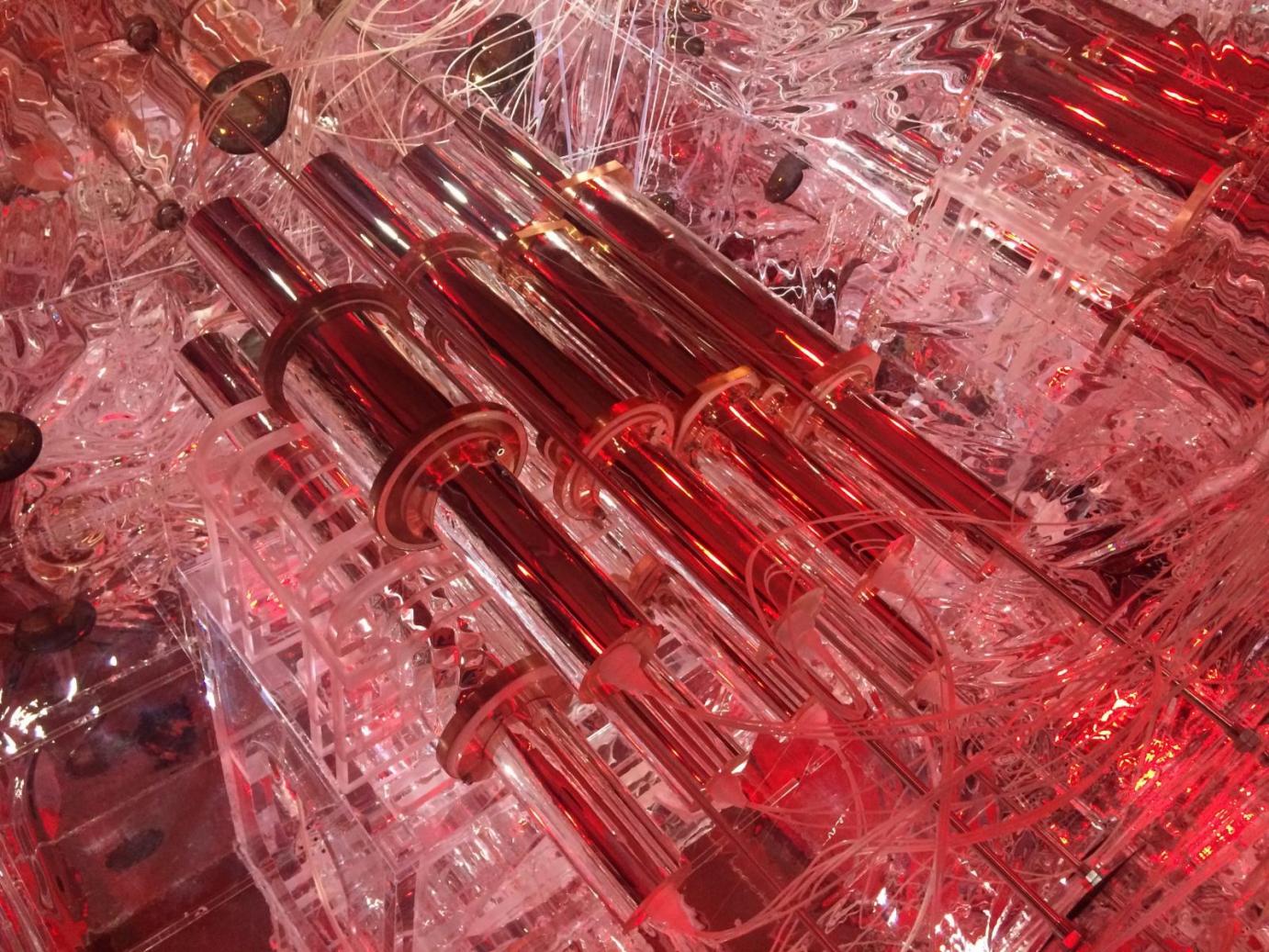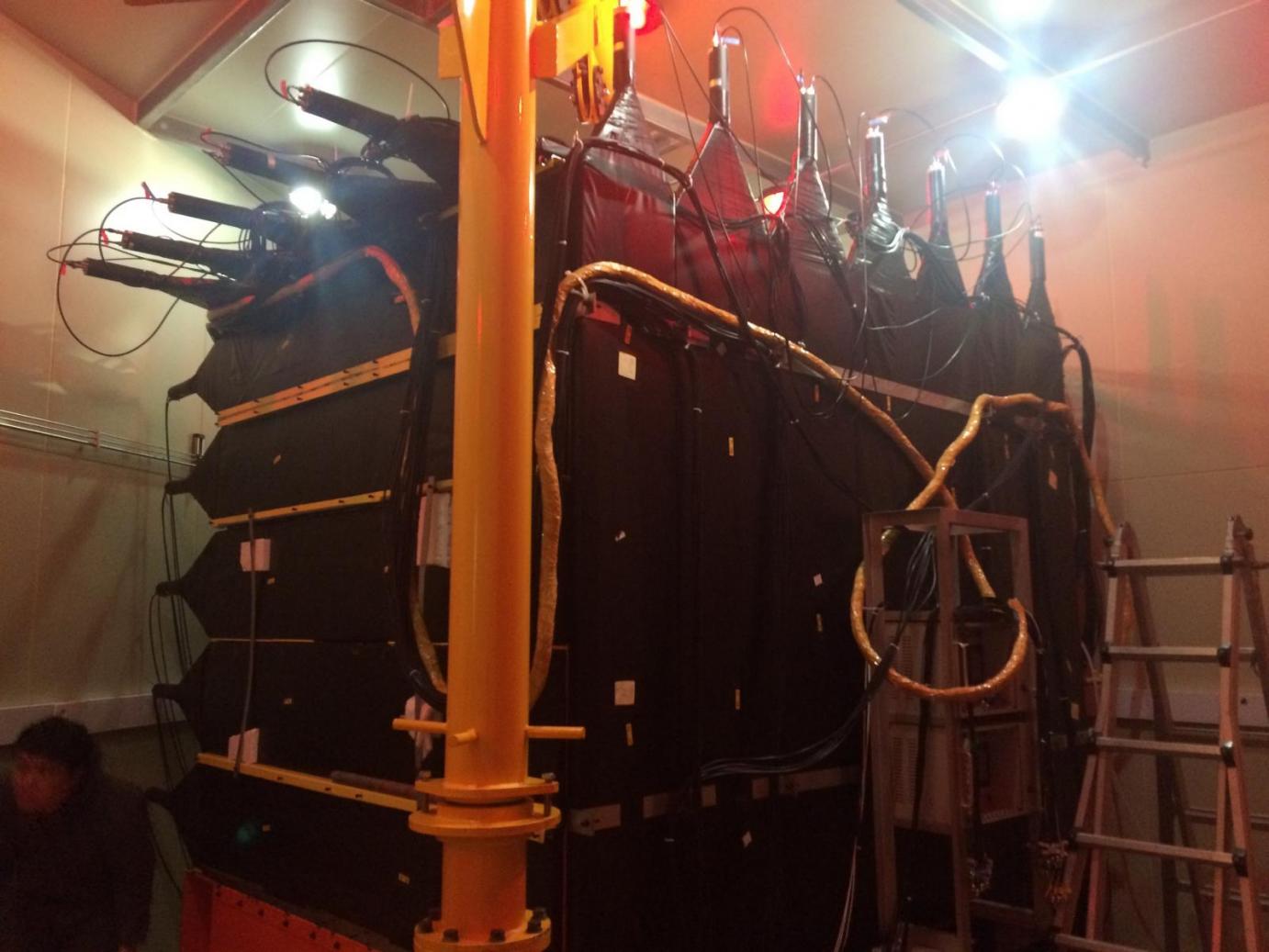
Updated dark matter constraints from COSINE-100
COSINE-100 has announced an analysis of their 1.7 year and 2.82 year data to tighten constraints on direct dark matter detections. In their analysis of more statistically limited 1.7 years of data, it appeared that the dark matter interpretation of the DAMA/LIBRA result might be in jeopardy. However in their follow-up analysis of 2.82 years of data, their results are compatible with DAMA/LIBRA as well as a null detection – leaving the hunt for dark matter open-ended.
3 minute read
 Caption: Illustration of the rotation of the Earth around the Sun as well as the Sun around the galactic center, resulting in a WIMP wind with a predictable variation of intensity throughout the year. Credit: Figure 1 in Francis Froborg & Alan R Duffy 2020, “Annual modulation in direct dark matter searches” J. Phys. G: Nucl. Part. Phys. 47 094002 | In the hunt for dark matter, one of the attempted detection methods is direct detection. One method of direct detection involves a large detector that is active on the order of years to decades, looking for an annual modulation in signal. From theoretical predictions, the rate of dark matter passing by Earth varies as Earth orbits the Sun, with peak annual activity estimated to be on June 2. |
The DArk MAtter Large sodium Iodide Bulk for RAre processes (DAMA/LIBRA) experiment has seen annular modulations that they have interpreted to be in agreement with dark matter predictions. However, experiments using alternative techniques with high sensitivity have not reported any signals that align with expected properties of dark matter. Additionally, experiments using the same technique as DAMA/LIBRA, such as Annual modulation with NaI scintillators (ANAIS) and COSINE-100, have not been able to reproduce the result and there is considerable debate in the community concerning the interpretation of the DAMA/LIBRA results.
Located at the Yangyang Underground Laboratory in South Korea, COSINE-100 is composed of low-background thallium-doped sodium iodide (NaI(Tl)) crystals. The total target mass is 106kg, with a 700m rock (or 1800m water-equivalent) overburden. One of the key difficulties with direct detection measurements is robustly characterizing the background so that known background sources are not mistaken for signals. 40K is a notorious contributor to the background of the 1-6 keV and 2-6 keV energy ranges of interest in detectors such as COSINE-100, with a tell-tale x-ray emission at 3.2 keV. Read more about 40K and the KDK collaboration here, who are leading the charge to better understand the decay scheme of 40K. Upcoming experiments such as Sodium iodide with Active Background Rejection Experiment (SABRE) are addressing background characterization by focusing on creating and using ultrahigh purity NaI(Tl) crystals. COSINE-100 is combating the inherent high background with robust background characterization and providing a high-mass target. |  Caption: All 8 NaI(Tl) crystals installed in COSINE-100. Credit: COSINE-100
Caption: Shielding structure construction of COSINE-100. Credit: COSINE-100 Credit: COSINE-100 |
COSINE-100 has recently released published articles and pre-prints with better background characterization, improved event selection criteria, and larger datasets. In their recently published article, where they report the results of 1.7 years of data, COSINE-100 constrains the dark matter interpretation of the DAMA/LIBRA annual modulation signals and rules out model-dependent dark matter interpretations in the case of the standard halo model for dark matter. In their most recent pre-print, which provides a follow-up data analysis on the annual modulation using 2.82 years of data and a lower energy threshold, COSINE-100 reports an annual modulation that is in agreement with both the DAMA/LIBRA result as well as a null result. This recent release demonstrates COSINE-100 is quickly converging on an experimental inflection point; where their data and analysis will soon be able to confirm or deny the dark matter interpretation of the DAMA/LIBRA results once and for all.

